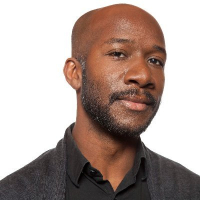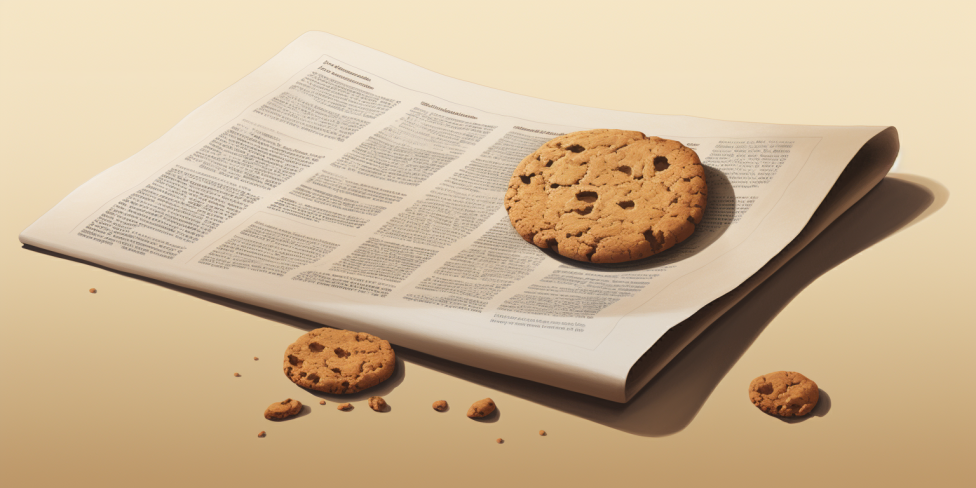This month the Conscious Advertising Network (CAN) held its second annual Conscious Thinking Live event, discussing everything from transphobia to sustainability. Naturally (or indeed artificially) the topic of AI came up repeatedly, with members raising concern for the impact on jobs, ad fraud and publisher content. VideoWeek asked four CAN members whether AI presents a threat, or an opportunity, for the media and advertising industry.
Johnny Winn, Head of Advertising, Virgin Media O2
 Now don’t get me wrong. I am absolutely terrified of the singularity. We’re careening towards it, with zero oversight, global consequences be damned. I think that AI is a threat, an existential one. That said, in the narrow context of speaking to you as an advertiser? No, I don’t particularly see AI as a threat.
Now don’t get me wrong. I am absolutely terrified of the singularity. We’re careening towards it, with zero oversight, global consequences be damned. I think that AI is a threat, an existential one. That said, in the narrow context of speaking to you as an advertiser? No, I don’t particularly see AI as a threat.
I can see it as a mild threat in terms of AI creative generation triggering IP-related issues which might impinge on the creative front. However, that threat isn’t unique to us in that it will continue to affect the creative industries more widely. It feels likely this will at some point be legislated against by regulators, and until then can be dealt with on a case-by-case basis.
I can also see AI-enabled audience algorithms as a wider threat to societal cohesion in that our targeting has become so sophisticated that it’s led to things like Brexit. But as an advertiser? Add that to the pro column.
But increasingly, I think of AI in media and advertising in much the same way that I came to think of ‘digital’ back in the day. It started off as a buzzword. Set off a frenzy of hype, spend, innovation. Until, that is, the pendulum swung too far, the hype died down, and eventually it became a slightly meaningless term. Because now almost everything is digital to some degree. I would argue that almost everything in our industry is in the process of becoming AI-enabled as well, and therefore it’s just part of the long arc of technological progress that we’ve always experienced over time. I believe that arc bends towards what consumers respond to. And if they respond to it positively… well then that’s an opportunity.
Dino Myers-Lamptey, Founder, The Barber Shop
 AI isn’t just a tool; it’s a tidal wave reshaping the landscape of media and advertising. The brave who dive headfirst into this wave, harnessing its power without fear of obsolescence, will find themselves riding the crest of progress. Remember, every technological marvel, from the wheel to the smartphone, demanded a human touch. AI is no different. From the grassroots employee to the executive elite, there’s a promise of liberation from mundane tasks and a multiplication of human efficiency. AI is the uber-assistant, a polymath in creativity, data analysis, and even legal affairs.
AI isn’t just a tool; it’s a tidal wave reshaping the landscape of media and advertising. The brave who dive headfirst into this wave, harnessing its power without fear of obsolescence, will find themselves riding the crest of progress. Remember, every technological marvel, from the wheel to the smartphone, demanded a human touch. AI is no different. From the grassroots employee to the executive elite, there’s a promise of liberation from mundane tasks and a multiplication of human efficiency. AI is the uber-assistant, a polymath in creativity, data analysis, and even legal affairs.
However, let’s not kid ourselves. The democratisation of AI, particularly in generative aspects, brings a dark underbelly. The simplicity of creating content breeds a torrent of mediocrity, ‘fakevertising,’ phishing scams, and fraudulent digital entities – a playground not just for bedroom amateurs but also for autocratic regimes. We’re feeding these AI systems with a diet of biased data, and garbage in means garbage out. Despite this, the silver lining remains. Amidst the noise, true gems of advertising will emerge, driven by true unique insight. The future of advertising lies in ideas that are not just conceived by the mind but are also governed by the heart – authentic, human-centric, and pulsating with life.
Harriet Kingaby, Co-Chair, CAN
 For me, AI poses both a threat and an opportunity. From a positive perspective, it allows us to spot helpful patterns in huge amounts of data, cuts down the time that it will take to both produce and tailor content, and will create new job opportunities that we haven’t even thought of yet. As someone who applies advertising tools every day to the issues of climate change, I see a bright future for its many applications.
For me, AI poses both a threat and an opportunity. From a positive perspective, it allows us to spot helpful patterns in huge amounts of data, cuts down the time that it will take to both produce and tailor content, and will create new job opportunities that we haven’t even thought of yet. As someone who applies advertising tools every day to the issues of climate change, I see a bright future for its many applications.
Yet I am also concerned about the way we’re implementing it. We’ve learned little from the way we embedded programmatic and social media advertising tools, and are jumping on new applications with little understanding of the risk. Meanwhile, creators’ IP is being infringed, discriminatory data in models is causing real-world harms, deepfakes are all over the internet, and I’ve heard calls for roll backs on data protection to speed AI adoption. That’s not even starting on the huge environmental impacts of the electricity needed to train and maintain AI systems. Let’s be clear, this is a suite of technologies which has been described as an existential risk to humanity, we need to be working with human rights groups and AI experts on ways to embed it ethically and sustainably. Now.
Respecting human rights and the environment should be a non-negotiable part of any new technology adoption, and this is no exception, no matter how exciting it is.
Simon Athlan, Brand Strategy Director, Jellyfish
 It’s a mixed bag. On the upside, AI is amazing at crunching data and fine-tuning ad targeting – think platforms like GA4 and Meta getting even smarter. Plus, it’s a game-changer for user experience. Smaller brands now have access to the kind of marketing tools the big guys use. And talk about efficiency (speed, costs, scale) – AI’s streamlining everything from creative processes to operational workflows, not to mention spicing up user interactions with cool, multimodal content. You can either work with AI as a ‘sparring partner’ or delegate specific/routine tasks to it.
It’s a mixed bag. On the upside, AI is amazing at crunching data and fine-tuning ad targeting – think platforms like GA4 and Meta getting even smarter. Plus, it’s a game-changer for user experience. Smaller brands now have access to the kind of marketing tools the big guys use. And talk about efficiency (speed, costs, scale) – AI’s streamlining everything from creative processes to operational workflows, not to mention spicing up user interactions with cool, multimodal content. You can either work with AI as a ‘sparring partner’ or delegate specific/routine tasks to it.
But, it’s not all smooth sailing. The regulatory scene around AI is like a minefield, and let’s not forget how wary people can be about AI stepping into their lives. Then there’s the disillusionment factor. If AI doesn’t live up to the hype, or if it starts to feel too controlling, people might just turn their backs on it. It’s also important to remember that AI can’t empathise with people. It won’t design autonomously your strategy, your brand, your ideas, your organisation. We advise our clients to always have humans in the loop. And a biggie for the creative world – can AI keep up with the nuances of human creativity? That’s a tough one.
A model specifically trained and protected for your company’s and/or clients’ needs seems to be the way forward. It’s ensuring brand safety and consistency whilst maximising data protection and qualitative outputs. AI is opening up some exciting doors in media and advertising, but we’ve got to watch our step. It’s all about finding that sweet spot where innovation meets responsibility.




